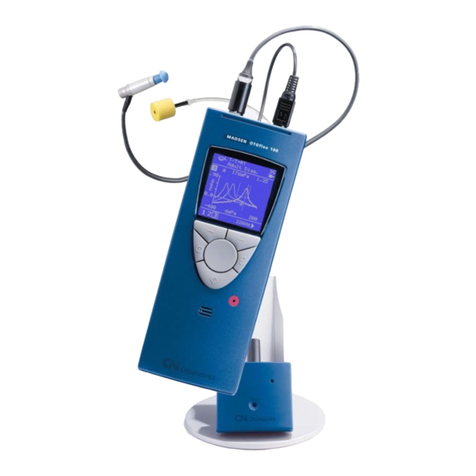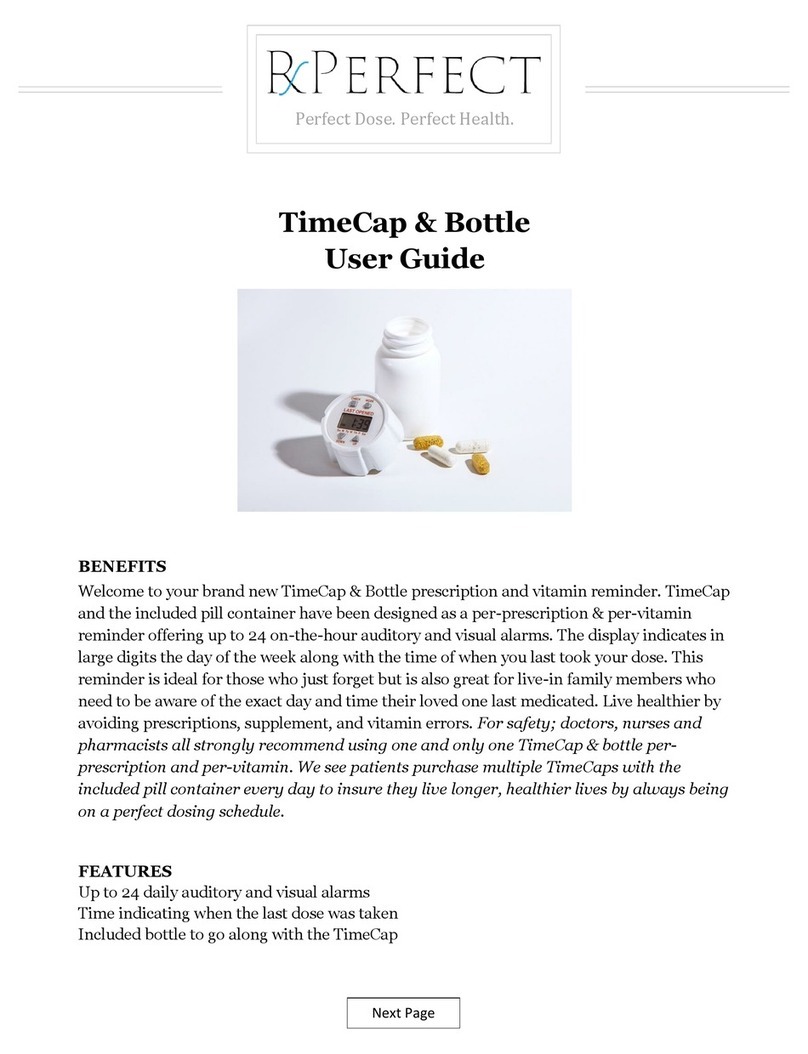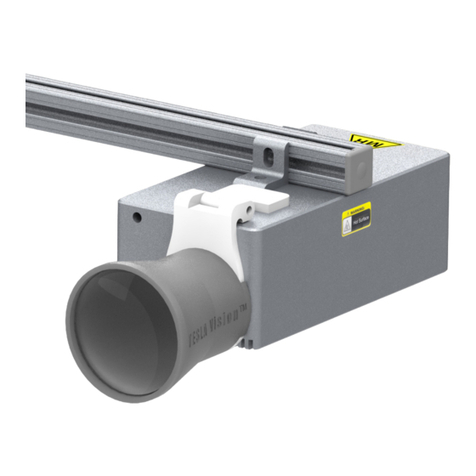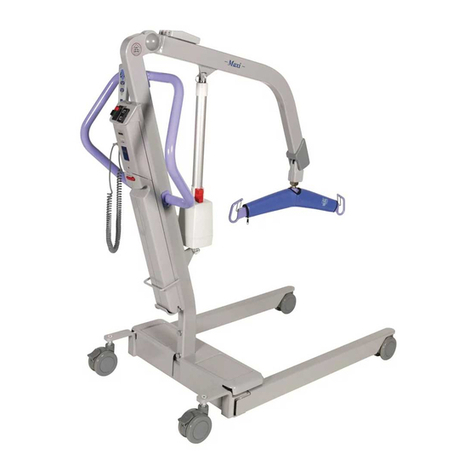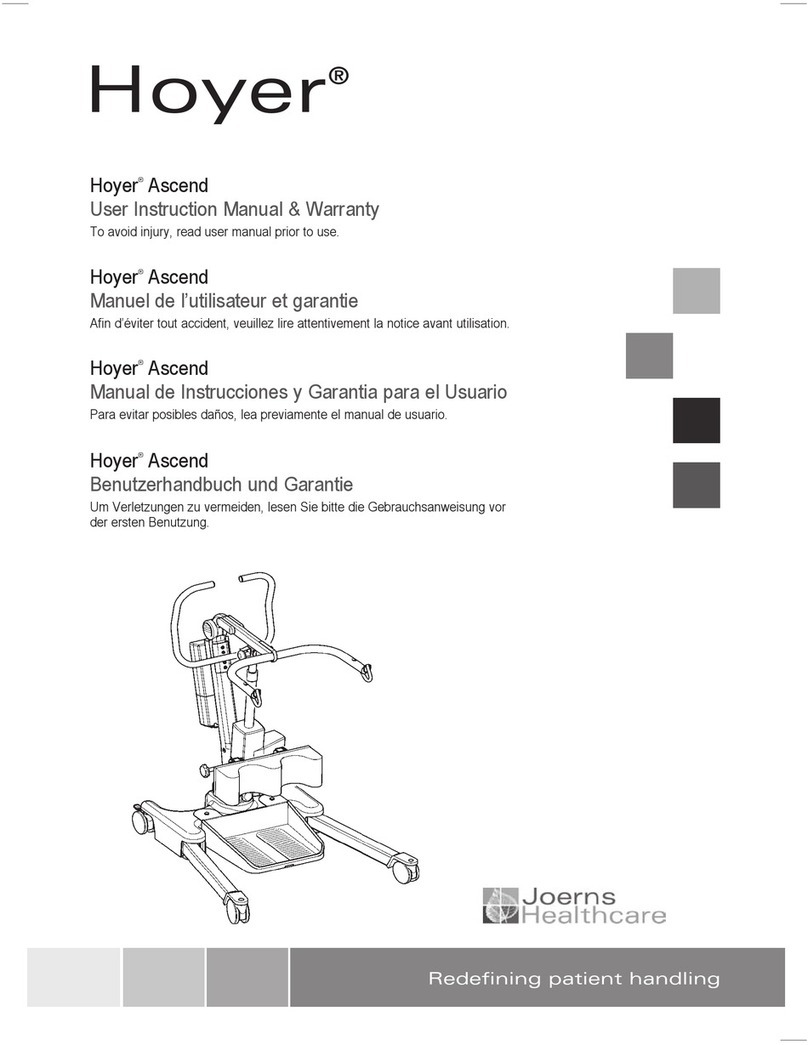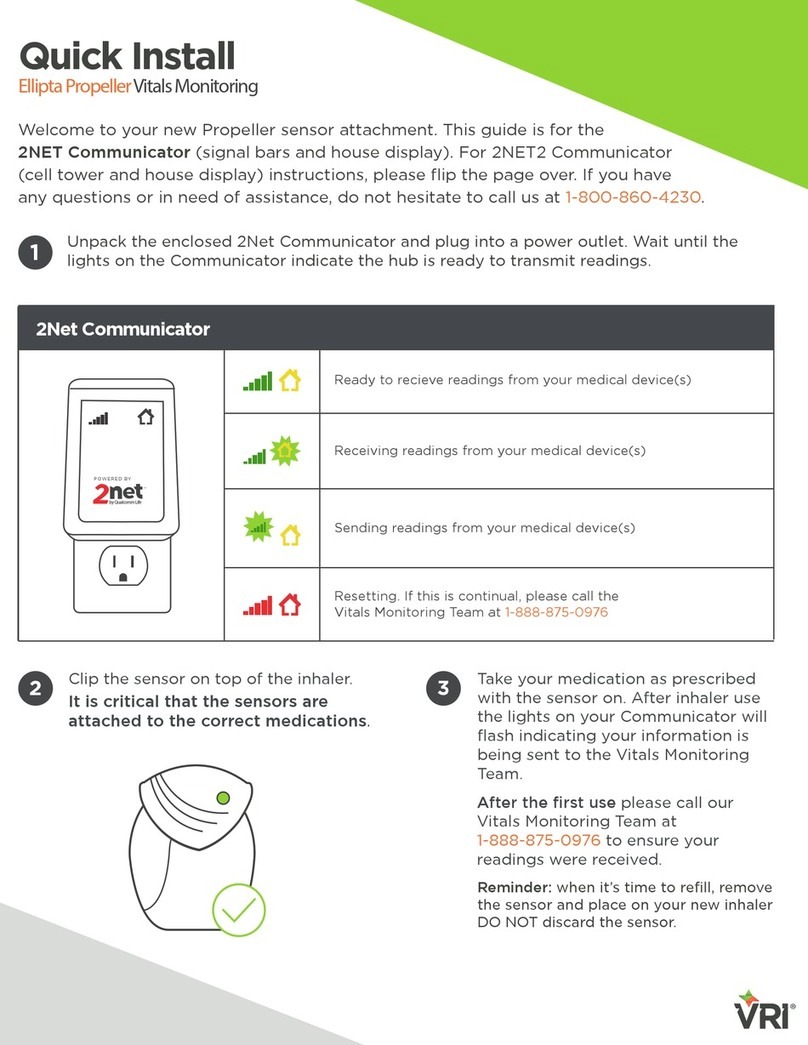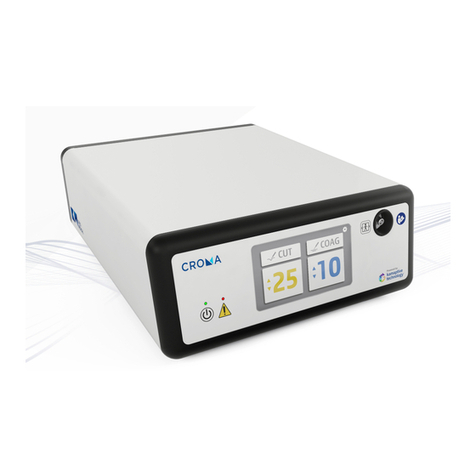Madsen AccuScreen PRO User manual

AccuScreen PRO
Otoacoustic Emissions
and Automated ABR Screener
Quick Guide
Doc. No. 7-26-6820/04
1275
0124

Warranty/Disclaimer
The warranty of GN Otometrics A/S and the manufacturer, Fischer-Zoth Diagnosesysteme GmbH/ Natus
Europe GmbH with regard to operation, quality or functionality of the AccuScreen does not apply if:
The equipment is not installed and used in accordance with the instructions in the manual.
Installation, assembly, extensions, readjustments, modifications, service and repair are performed by per-
sonnel other than those authorized by GN Otometrics.
The electrical installation of the equipment is not connected to earth and does not comply with IEC require-
ments.
All information, illustrations, and specifications in this Quick Guide are based on the latest product infor-
mation available at the time of publication. The manufacturer reserves the right to make changes at any
time without notice.
Limitations
The manufacturer reserves the right to make changes to the product described in this Quick Guide at any
time without notice. Neither GN Otometrics nor its suppliers make any warranty with respect to the accuracy
of the information in this manual.
About this manual
When required, a Read Me file is included on the installation disk providing complementary or late-breaking
information.

Copyright notice
No part of this Manual or program may be reproduced, stored in a retrieval system, or transmitted, in any form or by any
means, electronic, mechanical, photocopying, recording, or otherwise, without the prior written consent of GN
Otometrics A/S.
Copyright©2011, GN Otometrics A/S
Printed in Denmark by GN Otometrics A/S, Denmark
All information, illustrations, and specifications in this manual are based on the latest product information available at the
time of publication. GN Otometrics A/S reserves the right to make changes at any time without notice.
Version release date
30. August 2011
Technical support
Please contact your supplier.


Otometrics 7
Table of Contents
AccuScreen PRO
Otoacoustic Emissions
and Automated ABR Screener
Quick Guide
1 Before testing . . . . . . . . . . . . . . . . . . . . . . . . . . . . . . . . . . . . . . . . . . . . . . . . . . . . . . . . . . . . . . . . . . . . . . 5
1.1 Preparing for the test . . . . . . . . . . . . . . . . . . . . . . . . . . . . . . . . . . . . . . . . . . . . . . . . . . . . . . . . . . . . . . . . . . . . 5
1.2 Preparing the test environment . . . . . . . . . . . . . . . . . . . . . . . . . . . . . . . . . . . . . . . . . . . . . . . . . . . . . . . . . . . . 6
1.3 Preparing the patient . . . . . . . . . . . . . . . . . . . . . . . . . . . . . . . . . . . . . . . . . . . . . . . . . . . . . . . . . . . . . . . . . . . . 6
1.4 Preparing for ABR testing . . . . . . . . . . . . . . . . . . . . . . . . . . . . . . . . . . . . . . . . . . . . . . . . . . . . . . . . . . . . . . . . 7
1.5 Fitting the ear couplers . . . . . . . . . . . . . . . . . . . . . . . . . . . . . . . . . . . . . . . . . . . . . . . . . . . . . . . . . . . . . . . . . . 7
1.6 Fitting the ear tip on the probe . . . . . . . . . . . . . . . . . . . . . . . . . . . . . . . . . . . . . . . . . . . . . . . . . . . . . . . . . . . . 8

Table of Contents - AccuScreen PRO Otoacoustic Emissions and Automated ABR Screener • Quick Guide 8
2 Testing the patient . . . . . . . . . . . . . . . . . . . . . . . . . . . . . . . . . . . . . . . . . . . . . . . . . . . . . . . . . . . . . . . . . . 9
3 Interpreting test results . . . . . . . . . . . . . . . . . . . . . . . . . . . . . . . . . . . . . . . . . . . . . . . . . . . . . . . . . . . . 11
4 Viewing results . . . . . . . . . . . . . . . . . . . . . . . . . . . . . . . . . . . . . . . . . . . . . . . . . . . . . . . . . . . . . . . . . . . . 13
4.1 TEOAE results . . . . . . . . . . . . . . . . . . . . . . . . . . . . . . . . . . . . . . . . . . . . . . . . . . . . . . . . . . . . . . . . . . . . . . . 13
4.2 DPOAE/DPOAE Diagnostic results . . . . . . . . . . . . . . . . . . . . . . . . . . . . . . . . . . . . . . . . . . . . . . . . . . . . . . . 14
4.3 ABR results . . . . . . . . . . . . . . . . . . . . . . . . . . . . . . . . . . . . . . . . . . . . . . . . . . . . . . . . . . . . . . . . . . . . . . . . . . 15
5 Printing . . . . . . . . . . . . . . . . . . . . . . . . . . . . . . . . . . . . . . . . . . . . . . . . . . . . . . . . . . . . . . . . . . . . . . . . . . . . 17
5.1 Printing a report . . . . . . . . . . . . . . . . . . . . . . . . . . . . . . . . . . . . . . . . . . . . . . . . . . . . . . . . . . . . . . . . . . . . . . 17
6 Transferring data . . . . . . . . . . . . . . . . . . . . . . . . . . . . . . . . . . . . . . . . . . . . . . . . . . . . . . . . . . . . . . . . . . 21
6.1 From AccuScreen PRO to a PC . . . . . . . . . . . . . . . . . . . . . . . . . . . . . . . . . . . . . . . . . . . . . . . . . . . . . . . . . . . 21
6.1.1 After transfer . . . . . . . . . . . . . . . . . . . . . . . . . . . . . . . . . . . . . . . . . . . . . . . . . . . . . . . . . . . . . . . . . 21
6.2 From a PC to AccuScreen PRO . . . . . . . . . . . . . . . . . . . . . . . . . . . . . . . . . . . . . . . . . . . . . . . . . . . . . . . . . . . 22
6.3 Deleting data . . . . . . . . . . . . . . . . . . . . . . . . . . . . . . . . . . . . . . . . . . . . . . . . . . . . . . . . . . . . . . . . . . . . . . . . . 22
7 Memory usage . . . . . . . . . . . . . . . . . . . . . . . . . . . . . . . . . . . . . . . . . . . . . . . . . . . . . . . . . . . . . . . . . . . . . 23
8 Maintenance . . . . . . . . . . . . . . . . . . . . . . . . . . . . . . . . . . . . . . . . . . . . . . . . . . . . . . . . . . . . . . . . . . . . . . . 25
8.1 The probe . . . . . . . . . . . . . . . . . . . . . . . . . . . . . . . . . . . . . . . . . . . . . . . . . . . . . . . . . . . . . . . . . . . . . . . . . . . 25

Otometrics 9
9 Status and error messages . . . . . . . . . . . . . . . . . . . . . . . . . . . . . . . . . . . . . . . . . . . . . . . . . . . . . . . . 29
10 Safety information . . . . . . . . . . . . . . . . . . . . . . . . . . . . . . . . . . . . . . . . . . . . . . . . . . . . . . . . . . . . . . . . . 35
10.1 Safety Symbols . . . . . . . . . . . . . . . . . . . . . . . . . . . . . . . . . . . . . . . . . . . . . . . . . . . . . . . . . . . . . . . . . . . . . . . . 35
10.2 Manufacturer . . . . . . . . . . . . . . . . . . . . . . . . . . . . . . . . . . . . . . . . . . . . . . . . . . . . . . . . . . . . . . . . . . . . . . . . . 36
10.3 Distributor . . . . . . . . . . . . . . . . . . . . . . . . . . . . . . . . . . . . . . . . . . . . . . . . . . . . . . . . . . . . . . . . . . . . . . . . . . . 37

Table of Contents - AccuScreen PRO Otoacoustic Emissions and Automated ABR Screener • Quick Guide 10

Otometrics 11
1 Before testing
1.1 Preparing for the test
• Fit the AccuScreen PRO with a charged battery pack.
• Plug the probe lead into the socket on top of the AccuScreen PRO. Align the red dot on the
probe plug with the red dot on the socket.
• For ABR testing also plug the electrode cable into the ABR plug.
• For ABR testing the probe can be replaced by the Y-cable with Ear Couplers. A major advantage
in using the Y-cable is that once the test starts, both ears will be tested consecutively.
• Plug the Y-cable plug into the "Ear probe" socket on top of the AccuScreen PRO. Align the white
dot on the probe plug with the red dot above the socket of the AccuScreen PRO.
• The patient data can be entered in the AccuScreen PRO directly or in the AccuLink and then be
transferred to the AccuScreen PRO. To do so, see “From a PC to AccuScreen PRO” on page 22
Note · If this is the first test of the day, switch on the AccuScreen PRO and make a probe test: Fit the probe
in the probe cavity and select Options > Self test > Probe test.
Note · For details on settings and how to use the AccuScreen PRO see the AccuScreen PRO User Manual.

Before testing - Preparing the test environment 12
1.2 Preparing the test environment
• Make sure that the test environment is as quiet as possible.
• Be sure to follow any established infection control procedures for the setting in which you are
working.
• Always use clean eartips.
• Swab the probe tip with disinfectant between babies.
1.3 Preparing the patient
• To prepare the patient for testing, position the patient so that you can easily access the ear to be
tested.
Neonatal screening • Neonatal screening is best performed when the baby is sleeping. If required, swaddle newborn
babies before ABR testing for a calming effect.
• Grasp the pinna and gently pull back and slightly away from the patient's head.
• Look into the ear canal to check for vernix or debris. Clean the ear canal, if required.
• Because newborn ear canals are very soft, they are easily pressed out of shape. If this is the case,
wait until the ear canal returns to its original shape.

Otometrics 13
1.4 Preparing for ABR testing
If you are preparing for an ABR test, place the electrodes on the patient as shown on the electrode
cable and make sure that they fit tightly on the skin.
.
• Connect the electrodes to the triple plugs (W, B, R).
1.5 Fitting the ear couplers
• Place the electrodes on the forehead, nape of the neck and cheek bone of the baby, before you
connect the Ear Couplers.
• Insert each of the two Ear Coupler adapters into the hole at the top of the Ear Coupler.
Warning · Never place the red and blue Ear Coupler adapters directly in the ear canal. Use them only with
the Ear Couplers fitted.
Note · Use the Ear Couplers only with the Y-cable - not with the OAE probe.
• Peel off the protective film of the Ear Coupler.
WBR
White: High on the forehead
Black: On the cheekbone
Red: On the nape of the neck

Before testing - Fitting the ear tip on the probe 14
• Place the Ear Coupler with the red adapter over the right ear of the baby, and the Ear Coupler
with the blue adapter over the left ear of the baby.
Note · Make sure that the adapters face upwards.
1.6 Fitting the ear tip on the probe
• Select an ear tip that fits the patient's ear canal. Gently push the ear tip onto the probe tip, and
make sure that the ear tip rests firmly on the base of the probe.
Note · The probe can be used for both ears. If you suspect infection in one ear, exchange the eartip before
you continue testing on the other ear.
• You can now go to the actual test.

Otometrics 15
2 Testing the patient
• Switch on the AccuScreen PRO.
• Select "Test" from the Main Menu.
• The AccuScreen PRO displays a list, where patients are listed either by their last names or ID
numbers (depending on the setting in "Options" - "Settings 2" - "Patient list mode"). Select the
name or number of the patient to be tested and press OK. Make sure that you have selected the
correct patient and press OK.
• Alternatively, you can manually enter a new patient’s name and data.
• Select the type of test you wish to use and press OK.
• Select the ear to be tested and then fit the probe in the appropriate ear canal of the patient.
• To place the probe in the ear canal, gently pull the pinna back and slightly down and insert the
probe, twisting it slightly as you insert it. Make sure that the probe fits well.
• Make sure that the cable is not in contact with any vibrating surfaces during testing.
• You can easily compensate for spontaneous movements of the head by reducing the pull on the
probe cable. To do so, form a big loop, which you hold loosely with one hand close to the head of
the patient.
• Press OK to confirm the selected ear and start the test.
• For TEOAE, DPOAE and DPOAE Diagnostic tests, calibration (CAL) is performed. For ABR
tests, the AccuScreen PRO performs an impedance test followed by calibration.

Testing the patient - Fitting the ear tip on the probe 16
• When calibration/impedance testing has been successfully completed, testing begins automati-
cally. The LED flashes green during testing. If it flashes red, noise levels are high and/or the probe
may not fit correctly.
• The test as it progresses is shown on the display.
Duration
• When the test is completed, the result is shown on the display. To interpret the test results, see
“Interpreting test results” on page 11.
• To cancel at any stage during the test, press STOP.
• To continue the test, press the OK button. You can now scroll to select the patient's other ear on
the screen and, if required, reposition the patient so that you can test the other ear.
• Before you continue testing the other ear, check to make sure that the probe is clean. See also
“Maintenance” on page 25.
• If you have finished testing the patient, you can continue with the next patient to be tested. If the
result was a REFER, it is recommended that you retest the patient.
TEOAE/DPOAE: Less than 10 sec. on babies with normal hearing.
ABR: Less than 1 minute on babies with normal hearing.

Otometrics 17
3 Interpreting test results
A patient screened by the AccuScreen PRO is either given a PASS or a REFER.
If the result is a PASS, no further action is required.
If the result is a REFER, it is recommended that you retest the patient. If the patient is given yet
another REFER, this patient should be referred for further testing.

Interpreting test results - Fitting the ear tip on the probe 18

Otometrics 19
4 Viewing results
You can view the individual test results in two ways:
• Select "View results" in the specific test screen. The results relating to the specific patient are
shown.
or
• Go to the Main Menu and select "View results". The name of the last tested patient appears auto-
matically. The six latest results are on view. Scroll to see other results, and press OK to view the
results in detail.
4.1 TEOAE results
PASS
A PASS is a PASS, indicating that the limits for A and S have not been exceeded (see below).
REFER
A REFER can be a "good" REFER or a "bad" REFER.

Viewing results - DPOAE/DPOAE Diagnostic results 20
A "good" REFER is when the A and S levels do not exceed the critical limits (see below), indicating
that test conditions were good.
A "bad" REFER is when the A and S levels have been exceeded, indicating that test conditions were
not optimal. In this case the patient should be retested.
A and S values
• If the "A" value (artifact reject) is greater than 20%, this may indicate a noisy test. Try to improve
test conditions and repeat the test.
• If the "S" value (stimulus stability) is less than 80%, the probe may have shifted or may not be in
a position to record the response.
4.2 DPOAE/DPOAE Diagnostic results
PASS
An overall PASS is obtained when OAEs are registered () in 3 out of 4 frequencies (DPOAE) or in 6
out of 8 frequencies (DPOAE Diagnostic/Multilevel).
REFER
A REFER is obtained when OAEs fail (R) in more than 1 out of 4 frequencies (DPOAE) or in more
than 2 out of 8 frequencies (DPOAE Diagnostic/Multilevel).

Otometrics 21
4.3 ABR results
PASS
A PASS indicates that an auditory brainstem response to a 35 or 45 dB nHL broadband stimulus was
detected. This method mainly tests the frequencies from 2000 to 4000 Hz, which carry the most
important acoustic information for speech development. A PASS result ensures that a significant hear-
ing loss in these frequencies can be ruled out with 99.5% confidence.
REFER
A REFER may indicate a significant hearing loss.
A REFER may also be the result when too much electrical noise drowns out the response. Too much
electrical noise can result if the infant moves or is sucking during the test. Other electrical appliances
and fluorescent lighting in the vicinity can also cause electrical interference. A good indication of this
is if the probability curve on the display is near to the PASS criterion. If this is the case, try to improve
measurement conditions and repeat the test.

Viewing results - ABR results 22
Table of contents
Other Madsen Medical Equipment manuals
Popular Medical Equipment manuals by other brands
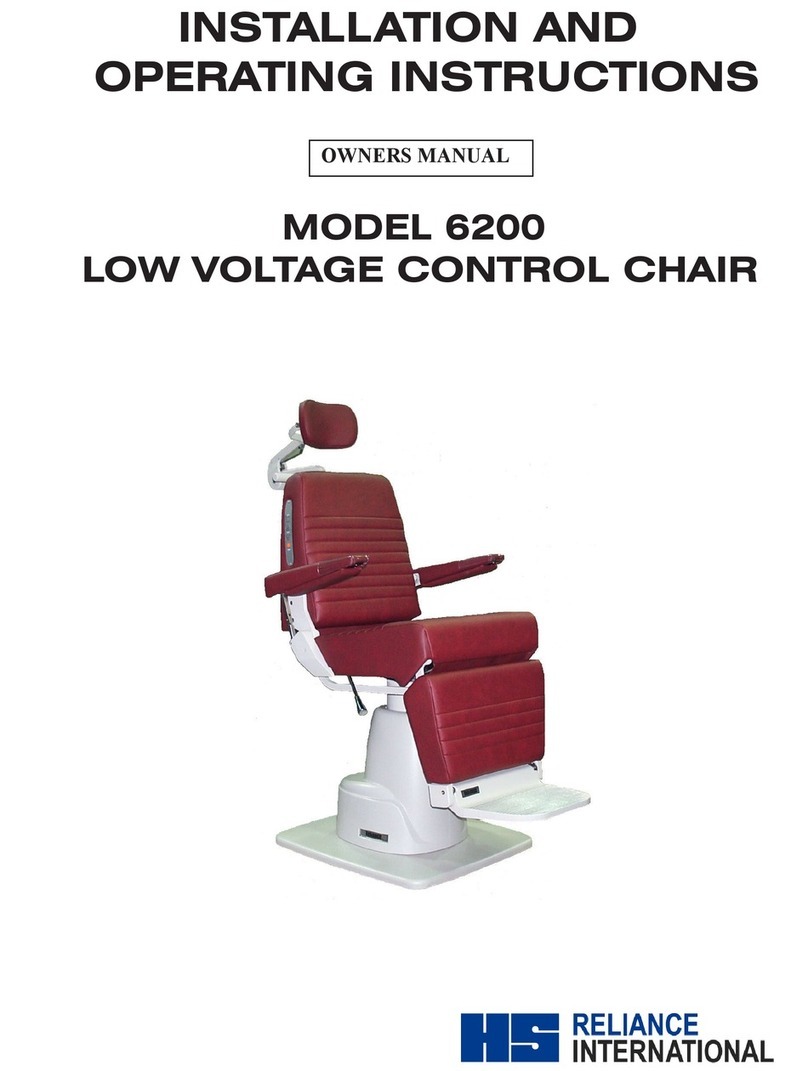
HS
HS 6200 Installation and operating instructions
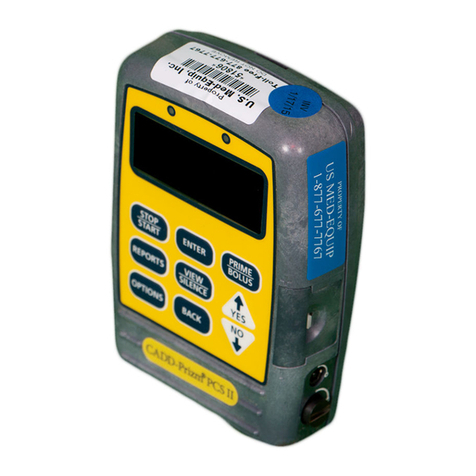
Deltec
Deltec CADD-Prizm PCSII 6101 Technical manual

MEDAP
MEDAP FINA O2 operating instructions
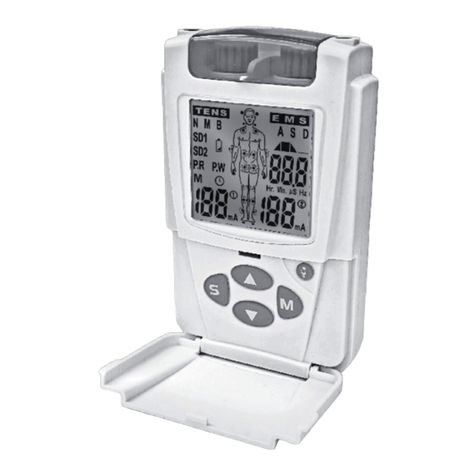
Proactive
Proactive alevia 715-425 instructions
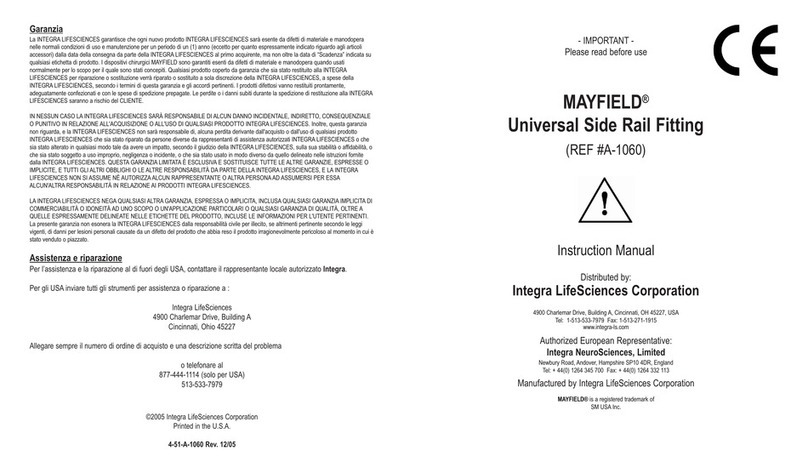
Integra
Integra MAYFIELD A1060 instruction manual
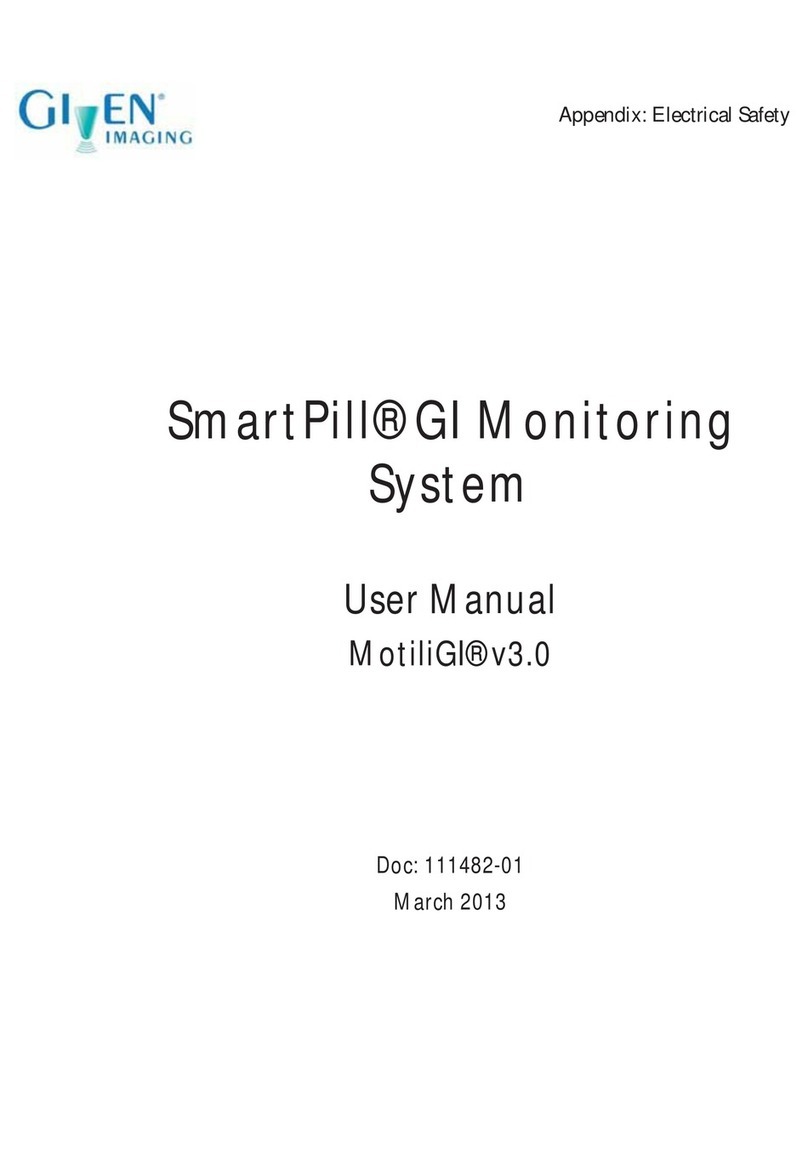
Given Imaging
Given Imaging SmartPill GI Monitoring System user manual
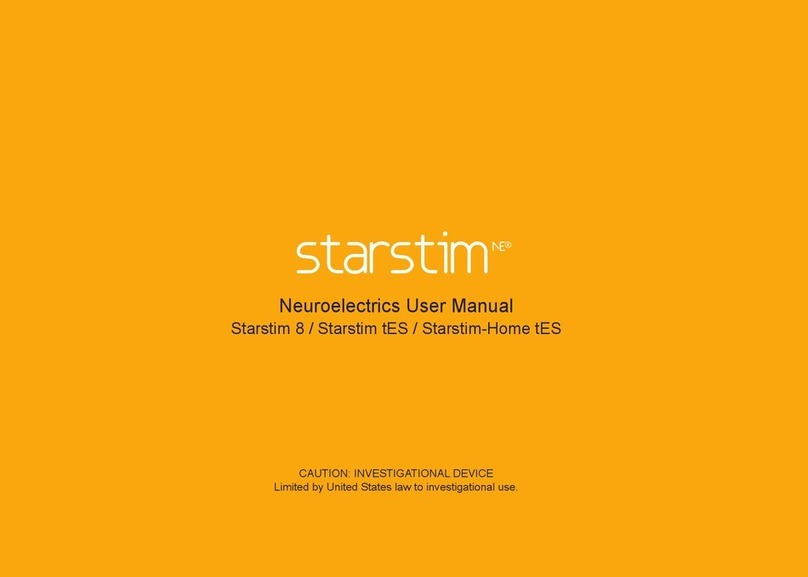
Neuroelectrics
Neuroelectrics Starstim 8 user manual
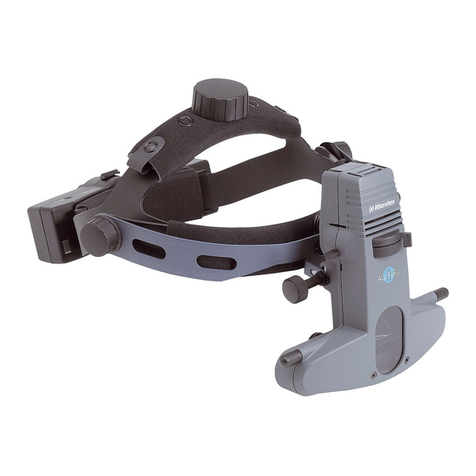
Riester
Riester ALL PUPIL II Wall mounting and safety instructions
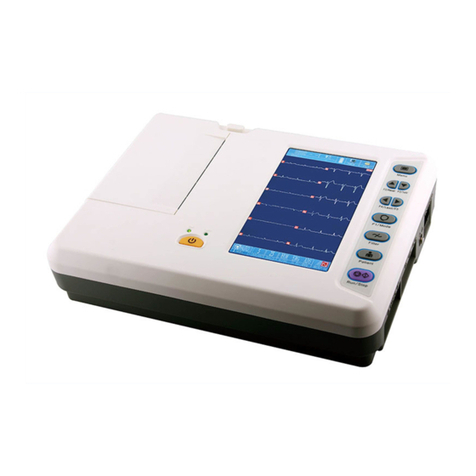
3RAY Electronics
3RAY Electronics ECG-3306G Operation manual
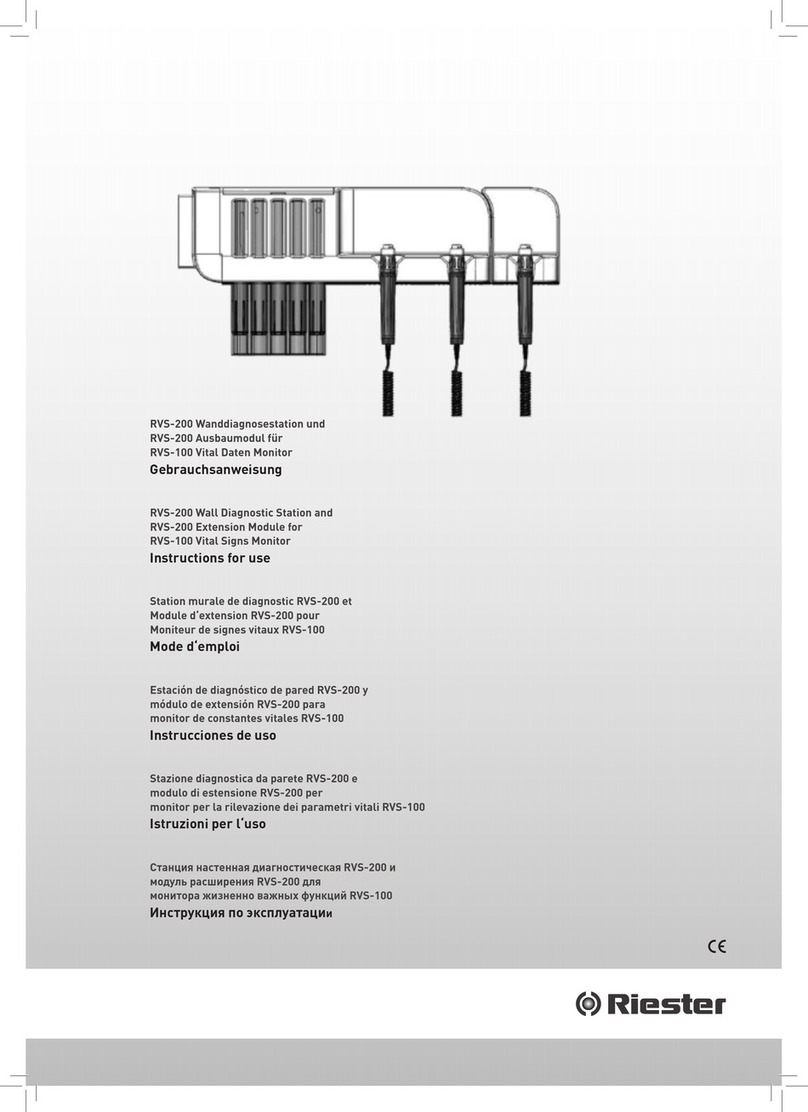
Riester
Riester RVS-200 Instructions for use
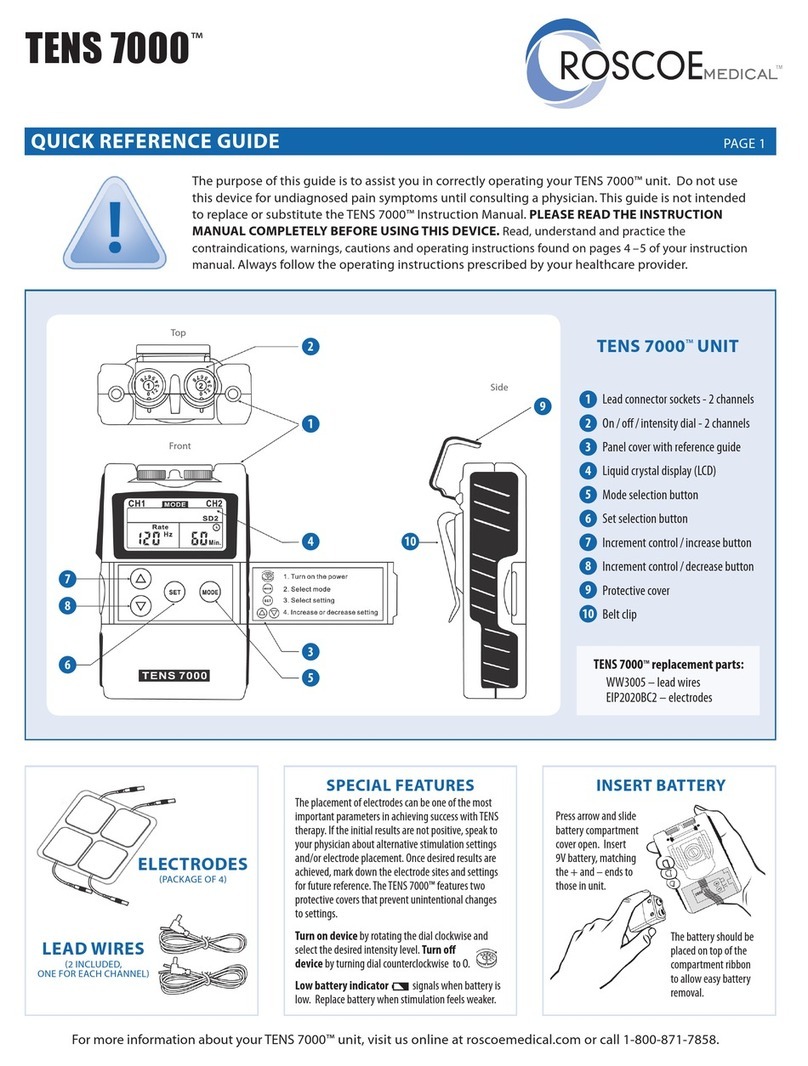
Roscoe Medical
Roscoe Medical TENS 7000 Quick reference guide
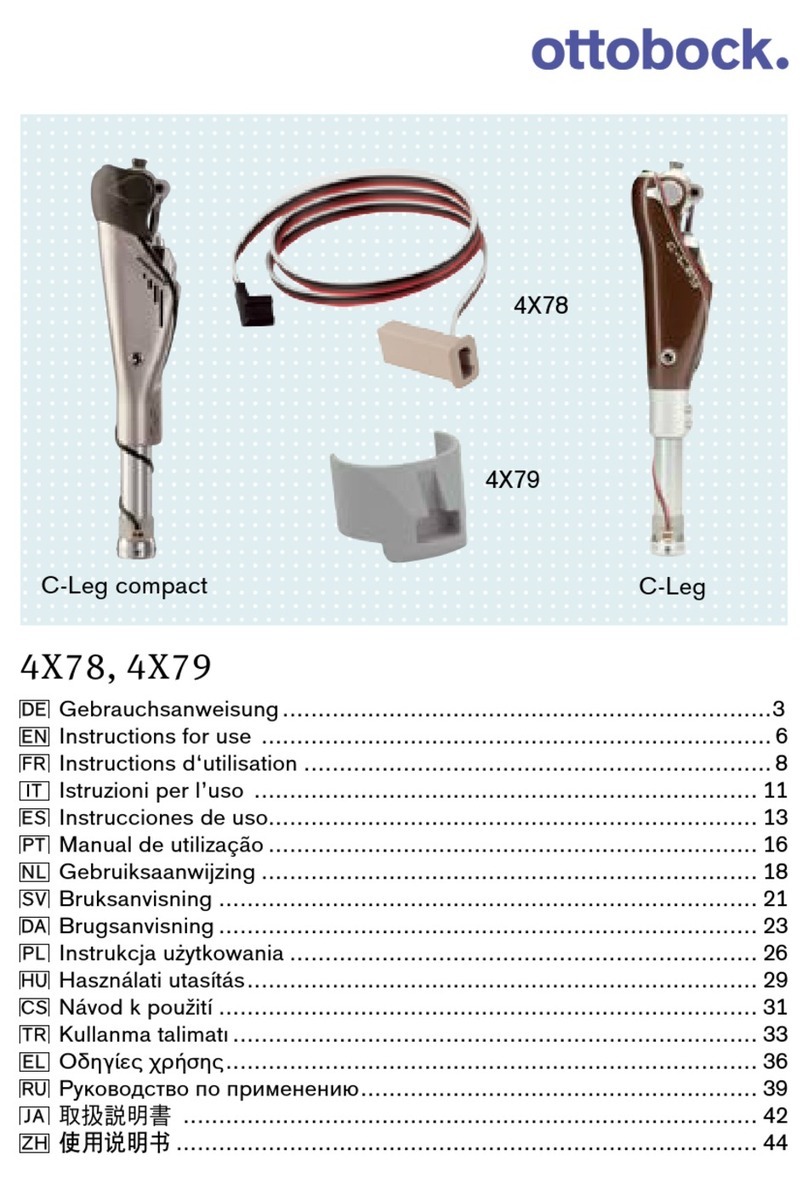
Otto Bock
Otto Bock C-Leg compact Instructions for use
